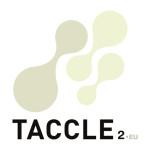Moovly is another neat way of making fun animations, presentations and posters. Record what you want to say then use the ready made clip arts to illustrate. You can upload your own pictures too. Use it to record explanations of theories or concepts in physics, to describe chemical processes or to tell some science history Full Article…
Little screen
Ages: 10 to 19 Overview Turn the stories created by students from the study of a literary book into an animated video using their mobile phones. The Little Screen (“Telinha do Cinema”) is a Brazilian project, which aims to encourage the integration of mobile technologies, in particular mobile phone, in the classroom. In this project, Full Article…
A little storybird told me…
Storybird is a wonderful tool to create picture books for and with your students. All you need is a free account. As a teacher you can add students, invite them to collaborate or give them an assignment. The works can be published, so parents and friends can appreciate them, too. The best thing, of course, Full Article…
ET turns ugly
We love Dvolver as a foolproof way of introducing children to movie-making and animation. It’s free, easy to use and just right for 7-10 year olds. Nic has produced a full lesson plan on how to use it in your classroom.
Xtranormal Ways
Consolidate previous lessons on voice work, character and themes in a set text. Students create an extra scene (for example, in Blood Brothers, they could write the scene in which Mrs. Lyons tells Eddie about Linda’s affair). They write the dialogue and record their own voice work to present to the class. As an unusual Full Article…
Story pathways
You can use Google Earth place marks as the basis of storytelling. Get the children to use Google Earth to plan a journey – start small! (A local cycle path is often a good start, or somewhere they visited on a school trip). Trace the journey using the path tool (click on the ruler in Full Article…






 English
English Nederlands
Nederlands Deutsch
Deutsch Italiano
Italiano Español
Español Português
Português Română
Română Cymraeg
Cymraeg